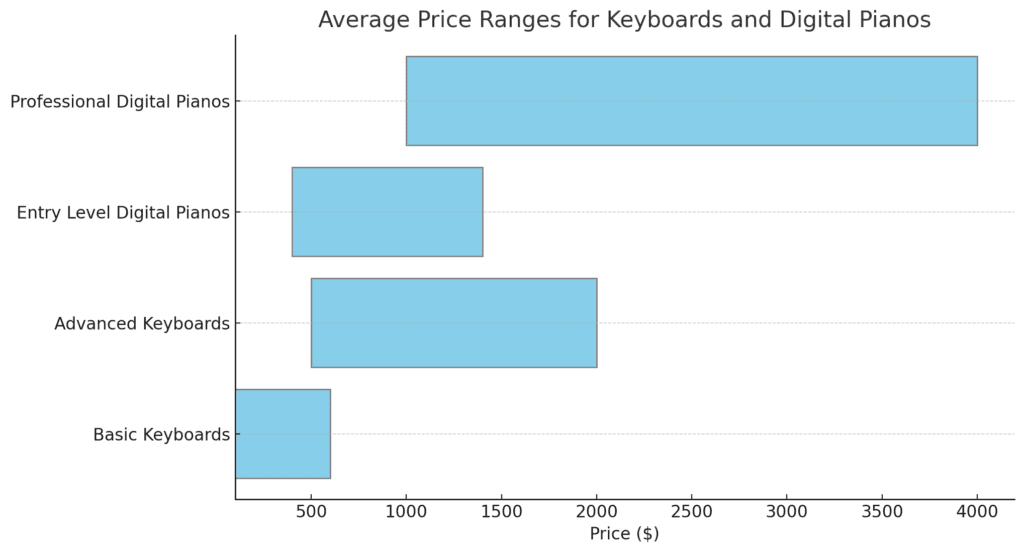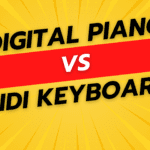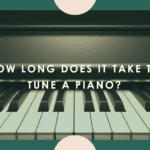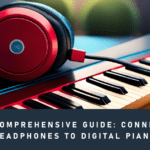A common question for aspiring pianists and keyboard players is what is the difference between a digital piano and a keyboard? While they may look similar at first glance, there are some important distinctions in terms of sound, feel, features and learning experience. This comprehensive guide examines the key differences and helps you decide which instrument is right for your needs.
Digital Piano vs. Keyboard: A Quick Comparison
Before diving into details, here is a high-level overview of how digital pianos and keyboards differ:
| Digital Piano | Keyboard |
|---|---|
| Designed to emulate the touch and sound of an acoustic piano | More focused on producing a wide range of instrumental sounds |
| 88 weighted, hammer-action keys | 61 to 88 unweighted or semi-weighted keys |
| Amplification and speakers built-in | May or may not have built-in speakers |
| Higher priced | Lower priced |
| Better for learning piano technique | More flexible for musicians playing many genres |
| Advanced features like metronome, transpose, and rhythm accompaniment | Basic features like metronome and transpose |
Now let’s explore these key differences in more depth.
Digital Piano Sound Quality

One of the main differences between digital pianos and keyboards is sound quality, especially when it comes to replicating the tone of an acoustic piano.
Digital pianos use more sophisticated sampling and modeling technology to capture the unique nuances of a real piano sound. Many sample sounds from famous concert grand pianos, like Yamaha sampling from their renowned CFIIIS concert grand piano.
In contrast, keyboards have a much wider range of sounds beyond piano samples, including strings, pads, organs, synths and more. This allows for more versatility in genres like pop, rock and electronic music. The tradeoff is that the core piano and electric piano sounds may not be quite as realistic or responsive on a keyboard.
Good digital pianos today use multiple piano samples at different velocity layers to emulate how an acoustic piano gets louder or softer depending on how hard the key is struck. Keyboards may only have one piano sound without velocity layers, so there is less dynamic expression when playing.
In terms of polyphony, digital pianos tend to have higher numbers like 128 to 256 notes, allowing more intricate passages to sound full. Keyboards might only have 32 to 64-note polyphony.
Digital Piano vs. Keyboard: Number of Keys
Digital pianos have 88 keys (36 black and 52 white), just like an acoustic piano. This gives the full range for learning classical piano repertoire.
Keyboards can have 61, 76 or 88 keys. Having fewer keys allows them to be more portable and compact. A 61-key keyboard is sufficient for simple songs, but limit what you can play. Larger keyboards like 76 key give you missing keys like C and F which are useful for many genres beyond classical.
Beginners learning piano fundamentals should start with at least 76 keys. Experienced players accustomed to the piano range will feel limited by anything less than 88 keys.
The main takeaway is that digital pianos give you the complete spans, while keyboards may have fewer keys for portability. This can affect playing style and capabilities.
Key Action and Playing Experience
One of the biggest differences between digital pianos vs. keyboards is the key action. Digital pianos use weighted keys with hammer mechanics emulating the touch and reponse of an acoustic piano. This graded weight provides resistance when pressing the lower keys just like on a real piano.
Keyboards use unweighted, semi-weighted or synth-action keys. Unweighted keys have no resistance and feel light. Semi-weighted add some feedback but still don’t have hammer mechanics. Synth-action keys are designed for quick, easy playability suited for synthesizer-style playing.
For students learning classical piano technique, weighted hammer action keys are preferred to build proper finger strength and control. However, synth-action allows for easier playability of fast riffs and solos common in rock, funk and jazz.
A final consideration is key surfaces. Acoustic pianos have textured ivory-like keytops for better grip and tactile feel. Digital pianos aim to emulate this texture with simulated ivory finishes. Keyboard keys tend to be smooth plastic surfaces. This can affect grip and comfort over long playing sessions.
Digital pianos capture the true acoustic piano playing experience, while keyboards offer alternative key actions optimized for other genres.
Features and Connectivity
Digital pianos and keyboards differ in their features, controls and connectivity options. Digital pianos focus mainly on piano performance features like pedals, sound shaping and emulated cabinet resonance. Keyboards have many more sounds, rhythms, sequencing and advanced features.
Here are some common features to consider:
Digital Piano Features
- Sustain, sostenuto and soft pedals
- Hammer effect and key off simulation
- Virtual resonant soundboard modeling
- Acoustic piano sample layering
- Split and layer function to play two sounds together
- Piano-focused effects like reverb and delay
- Metronome with adjustable tempo, time signature and volume
- Transpose function to change the key of the keyboard
- Rhythm accompaniments in various styles to play along with
Keyboard Features
- Hundreds of instrument sounds like synth, organ, strings
- Drum rhythms and accompaniment styles
- Advanced multi-track sequencing and recording
- Arpeggiator and advanced sound controls
- Pitch bend, modulation wheels
- MIDI and audio connectivity
For connectivity, digital pianos and most advanced keyboards include MIDI over USB. This allows connection to music apps, DAW software and more. Some keyboards add 5-pin MIDI ports for working with MIDI gear and synth modules.
Higher-end digital pianos and keyboards may have audio inputs for connecting phones, tablets or mics for play-along. It’s also common to have headphone jacks for private practice.
Digital pianos are designed as specialized piano instruments, while keyboards offer a wider range of features and connectivity for the modern musician.
Portability

One of the benefits of digital instruments compared to acoustic pianos is portability. If you want to move your instrument around easily, keyboards tend to be more portable than digital pianos.
There are several factors affecting portability:
- Weight: Keyboards start around 10 lbs, while digital pianos are typically 25+ lbs. Some lightweight keyboards can be under 5 lbs. Grand piano-style digital pianos weigh even more.
- Size/form factor: Keyboards come in compact sizes like 49-key models. Slim keyboard designs take up little space. Digital pianos have larger furniture-style cases aiming to match real pianos.
- Power: Keyboards can run on batteries allowing true travel portability. Digital pianos require AC power outlets.
- Built-in speakers: Small keyboard amps allow self-contained setup. Big digital piano amps and speakers are heavier.
- Stand: Many keyboards have lightweight, collapsible stands or even no stand needed. Piano stands are bulkier.

If your main goal is to have an instrument you can easily move, practice or perform with anywhere, a portable keyboard is likely the best fit. But digital pianos offer an authentic home piano experience in a somewhat more portable package vs. a heavy acoustic piano.
Cost and Value

Generally speaking, digital pianos have a higher price tag than keyboards. Acoustic piano emulation and quality-weighted actions are expensive to produce. However, keyboards can still run well over $1,000 for advanced professional models.
Here are some average price ranges:
- Basic keyboards: $100 to $500
- Advanced keyboards: $500 to $1500
- Entry level digital pianos: $400 to $1000
- Professional digital pianos: $1000 to $3000+
Within each range, you’ll find varying sounds, features and key actions. Shop around to compare pricing. Consider how much piano realism you need vs. other sounds/features.
In the mid-tier price ranges, digital pianos may offer better piano quality per dollar spent compared to similarly priced keyboards. High-end keyboards rival digital pianos for realistic piano performance.
No matter your budget, try out instruments in person to make the right decision. Many piano/keyboard stores have great return policies allowing home trials. Buying used can also save money for more value.
Learning and Progressing on Piano
A major consideration when choosing between a digital piano vs. keyboard is your learning goals. Are you looking to primarily learn piano, or is piano just one of many instruments you want to play?
Here are factors to consider as a new student:
- Classical piano focus: Learning classical repertoire or piano technique favors the 88-key range and weighted action on digital pianos. The piano sound and playing experience will be more consistent.
- Various genres/instruments: Wanting to learn piano along with practicing guitar, drums, vocals or playing in a band is better suited to a versatile keyboard. The variety of sounds and features aid musicianship across instruments.
- Portability needs: If you plan to move your instrument between home, class, gigging or traveling, a lightweight 61 to 76-key keyboard can be beneficial for portable practice and performance.
- Future growth: Even if starting out on a very basic keyboard, you may outgrow it after a few years if pursuing piano seriously. Consider saving up for a quality digital piano that will progress with you for longer, if budget allows.
Getting the right start as a beginner is crucial. An instructor can guide you in choosing between keyboard or digital piano for your learning objectives.
Digital Piano vs. Keyboard Comparison Chart
Here is a summary of the major differences between digital pianos and keyboards in an easy-to-scan comparison chart:
| Factor | Digital Piano | Keyboard |
|---|---|---|
| Keys | 88 fully weighted hammer action | 61, 76 or 88 keys with unweighted or semi-weighted action |
| Touch response | Graded hammer mechanics | Velocity sensitive or synth action |
| Sounds | Advanced piano samples | Piano plus synths, strings, organs, etc. |
| Polyphony | 128 to 256 notes | 32 to 128 notes |
| Features | Piano focused effects | Sequencer, arranger, MIDI/audio connections |
| Amp/speakers | Large integrated speakers | Small built-in or separate amp |
| Portability | Moderate; approx 25-50 lbs | Highly portable; as little as 5 lbs |
| Cost | $500 to $3000+ | $100 to $1500+ |
| Best for | Piano students and classical players | Gigging musicians, various styles |
This covers the main factors that differentiate the digital piano and keyboard experience.
Making Your Choice: A Decision Tree
Here’s a quick guide to help you decide between a digital piano and keyboard based on your needs:
- What is your primary goal?
- Learning classical piano: Go to step 2.
- Playing various styles/instruments: Go to step 3.
- Do you need portability?
- No: Consider a console digital piano for a more authentic piano experience.
- Yes: Consider a portable digital piano for its compact size.
- Do you need portability?
- No: An arranger keyboard with a variety of sounds and features might be a good fit.
- Yes: A portable keyboard is ideal for easy transport.
Budget Considerations:
Once you’ve determined your portability needs, consider your budget:
- Under $500: Explore entry-level options in both digital pianos and keyboards.
- $500-$1500: The mid-range offers a good balance between features and price.
- Over $1500: Professional options cater to serious musicians with advanced features.





